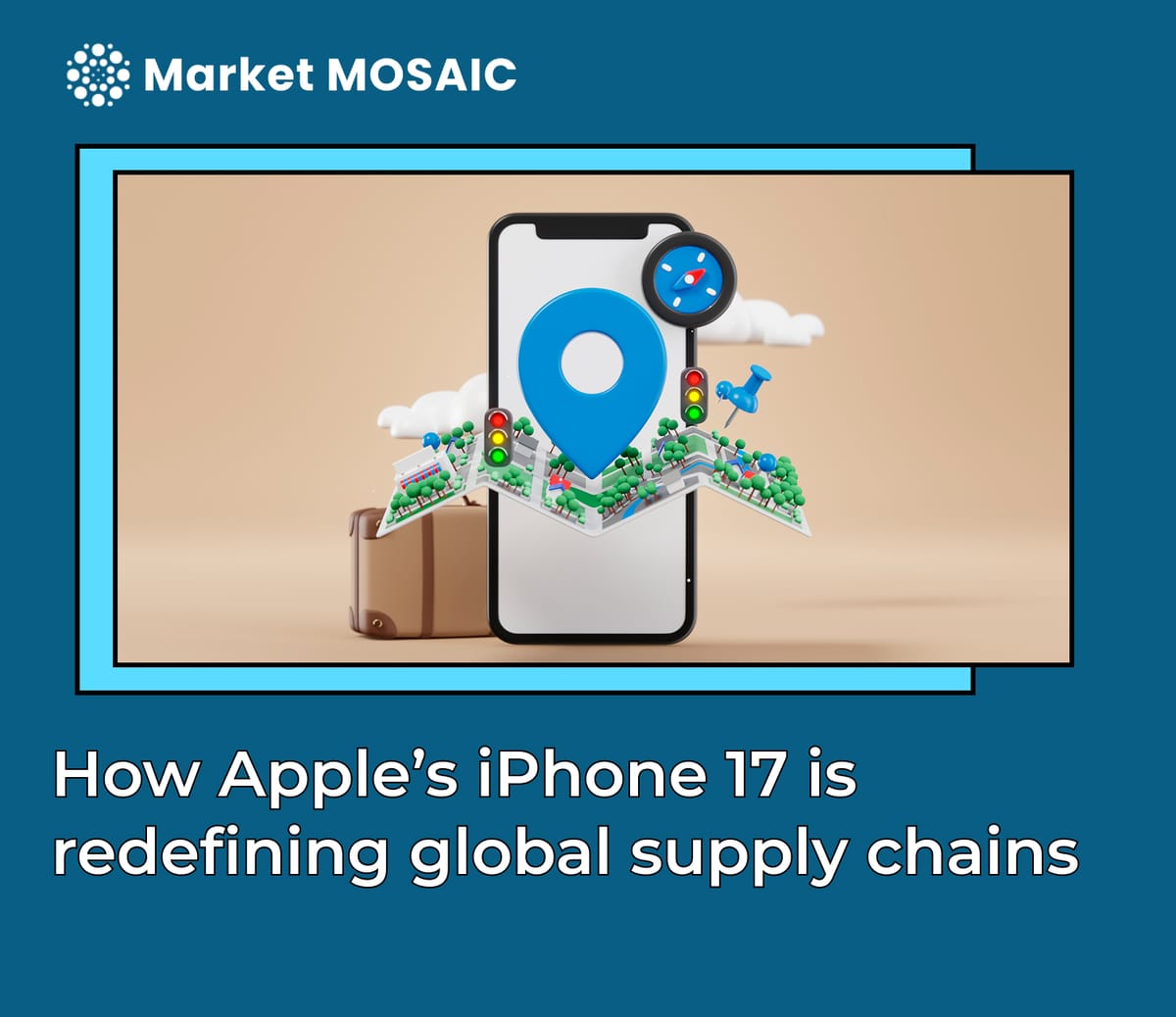How Apple’s iPhone 17 is redefining global supply chains
Apple’s move to build every U.S.-bound iPhone 17 in India marks a new chapter for global supply chains. India’s output has jumped 240% in a year, pushing past China to become Apple’s top supplier; reshaping trade, challenging rivals, and shaping what consumers expect from their next upgrade.

Global supply chain dynamics
For years, the global supply chain has been a story of efficiency. Companies chased lower costs and faster production, and China became the undisputed hub of that model. Apple, like nearly every other electronics giant, leaned heavily on Chinese factories, so heavily that, until recently, almost every iPhone in the hands of American consumers could be traced back to China.
But cracks began to show. The pandemic exposed just how fragile this dependence was, with factory shutdowns causing delays and shortages that rippled across the world. Add in rising U.S.–China tensions, tariffs, and technology restrictions, and the risks became too big to ignore. China’s dominance in scale, which was once a strength, now suddenly looked like a vulnerability.
Apple’s break from the old model
Before the iPhone 17, Apple took baby steps toward diversification. Some production shifted to India and Vietnam, but the big volumes still flowed from China. Even the iPhone 16 relied mainly on Chinese assembly lines.
The iPhone 17 changed everything. This time, every single unit bound for the U.S. is made in India. It’s the first time Apple has launched a flagship device without leaning on China from day one. That transition wasn’t smooth. China placed restrictions on moving advanced manufacturing equipment and experienced workers out of the country, essentially trying to keep its supply chain know-how locked in. Apple couldn’t simply copy-paste its production lines into India.
To close the gap, the company brought in skilled specialists from Taiwan and Vietnam. Their role was to train Indian workers, install critical machinery, and make sure the iPhones produced in India met the same quality standards consumers expect worldwide.
The outcome is historic. India has now overtaken China as Apple’s largest iPhone supplier. According to Canalys, output climbed 240% year over year, with shipments tripling to 21.3 million units in early 2025. India’s share of global iPhone production is projected to reach 20–25% by the end of the year, up from 14% in 2024.
Meanwhile, China’s position has weakened sharply. Its share of U.S. smartphone imports has been cut in half under the weight of tariffs, with exports plunging 72% in April alone to less than $700 million, the lowest level since 2011 (Bloomberg).
What does It mean for your next iPhone upgrade?
For consumers, this could mean smoother availability and fewer delays when the next iPhone hits stores in the U.S. India’s boost in production eases Apple’s dependence on one region, protecting shoppers from the kind of supply shortages that hit hard during the pandemic. By framing this as a move toward resilience and stability, Apple is quietly redefining supply chain strength as part of product quality. And in a world where people expect their devices to be reliable and arrive on time, that carries real weight.
How will this reshape the market?
For the market, the ripple effects are even bigger. Apple has proven that India can handle large-scale, high-tech production. That’s not just a win for Apple, it’s a blueprint for other global brands that have been hesitant to move out of China.
Investors see it as risk reduction. Apple’s dependence on China has always been a red flag for Wall Street. Now, the company can tell a stronger story: it’s less exposed to tariffs, sanctions, and political flare-ups. That’s good news for earnings stability and, by extension, stock value.
And then there’s the competitive angle. Samsung still relies mostly on Vietnam and South Korea for its smartphone output, while Chinese brands remain rooted in domestic factories. Apple’s success shows that spreading production across regions isn’t just doable—it can also pay off. That puts pressure on rivals to rethink their own strategies, because staying concentrated in one market could start to look less like efficiency and more like vulnerability.
What should business leaders take away?
For business leaders, resilience isn’t optional. In today’s world of geopolitical shocks and rising expectations, it’s part of the promise you deliver.
Apple didn’t simply move factories; it invested in people, built ecosystems, and earned consumer trust.
By making supply chain strength part of its story, Apple turned a behind-the-scenes move into something customers value. The iPhone 17 is more than a phone launch, it’s a signal that manufacturing will no longer be tied to one country but spread across regions that balance stability, cost, and reliability.





